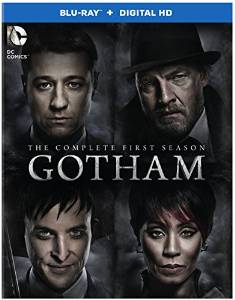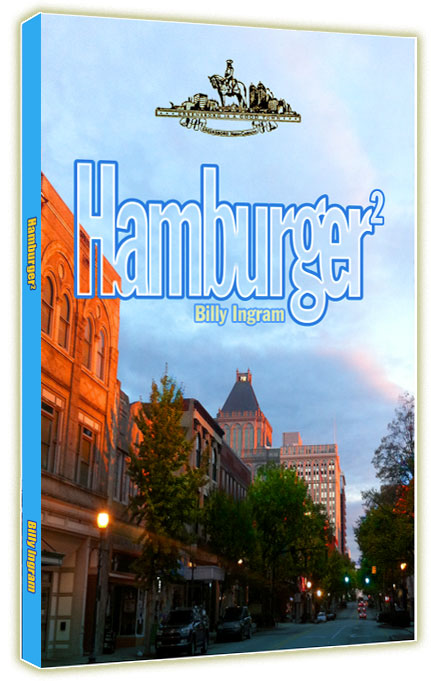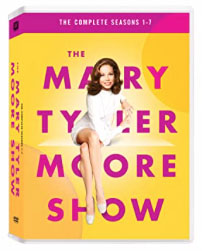Short History of TV Advertising 1950s - 1980s
By Billy Ingram
Television advertising really came of age in the 1980s.
In the 1950s , the TV medium was so new advertisers basically created the same commercials they would have for radio, only now you could see the spokesperson and the product. For instance, in a refrigerator ad, a model might point out all of the various features of that brand. Keep in mind, refrigerators themselves were a relatively new product. The biggest advertisers were for flour, sugar, gasoline, coffee, Jello, cigarettes, automobiles and other basic staples of life. Packaged foods like TV dinners and Fritos corn chips were just starting to become widely available.
VIDEO
In the 1960s , advertisers came to realize just how powerful television ads could be. Cereals with a higher sugar content were marketed to children, as were fad-driven toys like Hula Hoops, Superballs, Barbie dolls, and the like. Marketing execs blanketed television screens with products not seen before: novel snack foods, suntan lotion, frozen foods, (and cigarettes and cars) reaping millions of dollars for their efforts. The largest advertisers in the 50s & 60s sponsored specific shows, picking up the costs of those programs in exchange for exclusivity - as such they had more power over the content of those programs than the networks did. The middle of the decade introduced color to TV commercials.
VIDEO
The 1970s saw the networks becoming more independent, selling ads for a number of different products on each of their programs with no exclusivity. This was due to increased demand, if your product wasn't advertising on TV you just weren't seen, for the most part. Fast food franchises were everywhere by this point, bolstered by extensive ads on TV.
VIDEO
If 1970s' ads were all about who we were, 1980s' commercials were all about who we wanted to be
By the 1980s advertisers had learned, through extensive testing and focus groups, how to fine tune their message with music, color, kinetic imagery, and beautiful smiling people who's lives seemed ideal. Commercials in the 1950s / early-1960s commercials tended to run 60 seconds. By the 1980s, Americans' attention spans had shortened, 30 second ads were almost always the case. At the end of the decade, Cable TV was responsible for an explosion of TV commercials as it became cheaper to buy air time.
Here are some prime examples of 1980s ads for television.
VIDEO
Post-Modern Sitcoms / Actors That Wrote Books / 1987 Gilbert Gottfried Pilot Written By Larry David / Tarantino, DiCaprio & Pitt on Once Upon A Time In Hollywood / Ray Liotta and Joe Pesci Talk Goodfellas / Coming to America - The Awful Sitcom? / Robert Wagner Interview / Helen Mirren on 1923 / Lucky 19-Year Old Birthday Boy on The Price is Right / 1990-1999 TV Commercials / James Hong on the First & Only Asian Talent Agent in Hollywood / More Than Myagi: The Pat Morita Story / Chevy Chase 2021 Interview / Ally McBeal and that Darn Dancing Baby / The Pitts / Andy Huggins / I'm Sorry sitcom / Threat of Artificial Actors! / Ed Begley Jr. Interview / John Masius Tribute / Rap Folk Artist Demeanor Interview / Peter Boyle's Heart Attack on the Set of Everybody Loves Raymond / Patrick Swayze Refused To Do 'Ghost' Without Whoopie Goldberg / Clark Furlong on Stephen King's Mini-Series Lisey's Story / Rita Rocks Lifetime Sitcom / 14-Year Old Brody Bett Steals the Show at a David Foster Concert / Worst Big Budget Superhero Movie of All Time / William and Bonnie Daniels, ReLaunch Online Store / Jerry Springer's Toxic TV Legacy / Three Generations of Talent / Mary McCormack on The West Wing / TOBE : First Respectful Children's Book for Black Kids / Greensboro NC Stories & Weird History! / Greensboro NC Stories & Weird History : It Happened on Hill Street! / One Season Too Many / Dick Wolf on the Writer's Strike / Angela Lansbury Tribute / Sam Fribush Organ Trio / Why The Nanny Matters / Houston Knights / Rissi Palmer is Still Here / Uncle Buck Sitcom / My Brush With King Charles / Bonnie Bartlett Daniels Interview / Frank Zappa Talk Show? / Remembering Marvel & Buffy Scribe Pierce Askegren / Piper Laurie Tribute / 1993 Route 66 Reboot / David Hyde Pierce on the Last Days of ‘Frazier’ / Angela Lansbury Interview / The Shadow Movies of the 1930s & 40s / Remembering Hal Holbrook / Remembering Angela Lansbury / Greensboro Movie Theaters : Star Theatre / Police Squad Shot-By-Shot Remake of M Squad! / A Painting Saved Bill Murray's Life / Why Jim Carrey Fought to Cast Jeff Daniels in 'Dumb and Dumber' / Meredith Baxter Talks Breast Cancer / Sopranos Creator David Chase Had to Fight to Make Tony Soprano the Mobster He Was / Joan Collins on Working With Drunk Actors / Snowmaggedon 1969 / Joe Pesci HATES Practical Jokes / Books About Showbiz / Making It in Showbiz / Dark Justice / My Fave Book About Showbiz / Remembering Billy Packer / More Celebrity Biographies / Peter Falk : Inside The Actor's Studio / Jason Alexander on Duckman / Robert Ebert on Robert Mitchum / Watch Dave Chappelle's New Netflix Special for Free / Margaret (Wicked Witch of the West) Hamilton Was Almost Scarred For Life Filming Wizard of Oz / Restaurant Chains We Might Lose In 2020 / Night Heat / Short History of TV Advertising / Is Ellen A Monster? / To Binge Or Not To Binge? / 1986-87 TV SEASON / Celebrity Bios 4 / 1988-89 TV SEASON / 1990-91 TV SEASON / Can Comic Book City Survive? / When TV Plays Politics for Laughs / The Worst Thing I Ever Saw (Part 2) / Greensboro's Beef (Biff) Burger Has Closed! / Sally Field Looks Back on Smokey and the Bandit / Actors Writing Memoirs 2 / Gene Wilder's Sexual Chemistry with Richard Pryor / WORST Pizzas Served On Kitchen Nightmares / Ricky Gervais' Cruelly Funny 2020 Golden Globe Monologue / What It's Like To Win A New Car on The Price Is Right / Night Train! 3 - Las Vegas Comic Pat Cooper / Night Train! 4 - Resurrection and Death of Louis Prima / Denis Shepard of Paradise Lost / Space Force Logo is a Ripoff from Star Trek! / Batman Movie from 1939? What?!? / Michael Richards (Kramer) Really Hated It When his Seinfeld Co-Stars Messed Up / Melissa McCarthy Almost Quit Acting Days Before Landing Gilmore Girls / Bar Rescue's Wildest Customers! / How The Golden Girls and Elvis Got Tarantino's Reservoir Dogs Made / Charlie Brown Voice Actor Released From Prison / New Year's Eve on TV / Sir Laurence Olivier on the 'Genius' of Marlon Brando / 1967 Futurists Predict The 21st Century / Remembering Diahann Carroll / 50 Funniest Niles Crane Insults / TV HITS - By the Numbers / How Tom Hanks Played Mr. Rogers / Colin Farrell as The Penguin? / Alex Baldwin On His TV and Film Roles / Ray Charles' BIG Problem With TV / Malcolm Gladwell on TV Crime Dramas / Why Dolly Parton Would Not Let Elvis Record 'I Will Always Love You' / Top Ten Sitcoms of the 1970s / Danny McBride Rebooting Hogan's Heroes? / Fashion on TV / Alive & Well / James Cameron Made No Money for Titanic / Whatever Happened To Miss Cleo? / Lucy Blows Off Burt Reynolds / Dave Navarro Meets His Mother's Killer / The Real Mindhunters Killers / John Goodman Breaks Down His Iconic Roles / Growing Up In The Playboy Mansion / Ed McMahon Drunk on the Air! / Lucy Interviewed by Barbara Walters / Valerie Harper Cancer / Jeff Bridges Breaks Down His Iconic Roles / Dog Fight! The KCNC Scandal / Buckley vs Hefner / Laurence Olivier vs Marilyn Monroe / Dallas vs Eight is Enough / 1974 MAD Magazine TV Special - Never Aired! / Iconic M*A*S*H Restaurant Coming To Kroger? / Matt Damon, Bill Murray, and Graham Norton - Big Laughs! / When Lucy Got Fired / Partridge Family and Brady Bunch at Kings Island theme park 1972-73 / Awkward Talk Show Moments / Allan Blye Interview / Jack Benny's Last Tonight Show 1974 / Patricia Heaton's Audition for Everybody Loves Raymond / Luke Perry's Last Role / Johnny Cash's Last Interview / Judy Garland's Last Film / Who Was Bob Gordon? / Richard Dreyfuss vs Bill Murray / Jeff Ross vs Everybody / Tennessee Williams 1972 Interview / Ed Asner Interview / Norm Macdonald vs OJ Simpson / Tony Kornheiser Interview / Freddy's Nightmares TV Series / Awful 1990s TV Shows / The Funniest Comebacks in Talk Show History / Was Sonny Bono Murdered? / Robin Williams' Mrs. Doubtfire Screen Tests / Robert Downey Jr Asks for Forgiveness for Mel Gibson / Russell Brand / Hank Williams: The Show He Never Gave / Judy Garland vs Liz Taylor / Emmy Award Multiple Winners / Nathaniel Taylor aka Rollo Lawson / Anthony Zuiker: Mr. CSI / Jimmy & Cher / Diana Muldaur: A Viewer's History / Uncle Andy's Funhouse / Bea Arthur vs Betty White / Skidoo: Worst All-Star Comedy Ever? / Every Marvel Cartoon Opening Theme From 1966 - Present / When Stars Play Themselves / My Pen Pal is in the Pen, Pal / Small Roles Big Performances / Barbara Hall / Stars Before They Were Famous / Stars Before They Were Famous 2 / Stars Before They Were Famous 3 / A Better Classic TV Network / Bill Paxton / Who Was the Black Daliah? / How Frasier Was Created / Music Videos / Chitty Chitty Bang Bang - Behind the Scenes / Shirley Jones Interview / What We Lost When We Lost VHS / When Hit TV Shows Return / Commercials Starring Sopranos Cast Members / Shows Nobody Remembers But Me 4 / Shows Nobody Remembers But Me 1 / Bryan Cranston Interview / FREE streaming movie service you didn’t know you have / The Great Cable TV Migration / Sportscaster Woody Durham / Movie Posters and the documentary 24x36 /Chris Robinson /Dallas Reboot /David Letterman /Auditioning For Game Shows in the 80s /Ghosts of Cable TV past / Honey Boo Boo - WTF?!? / Steven Bochco Tribute / Ian Abercrombie / Joe Franklin / John Nettles / Gotham / Jon Cryer / Jon Stewart / Lana Wood / David Letterman / Matt Bomer / Molly Ringwald / Morgan Brittany / Music Rights for TV Shows / Neilsen Ratings / Norman Lloyd / Not Your Dad's TV / TV Series Reunions / Rich Little / Special Bulletin with George Clooney / Howard Stern VS Jamie Foxx / Top Ten Action Movies / 2013 Emmy Awards / 2010 Celebrity Deaths
It is what it is!















